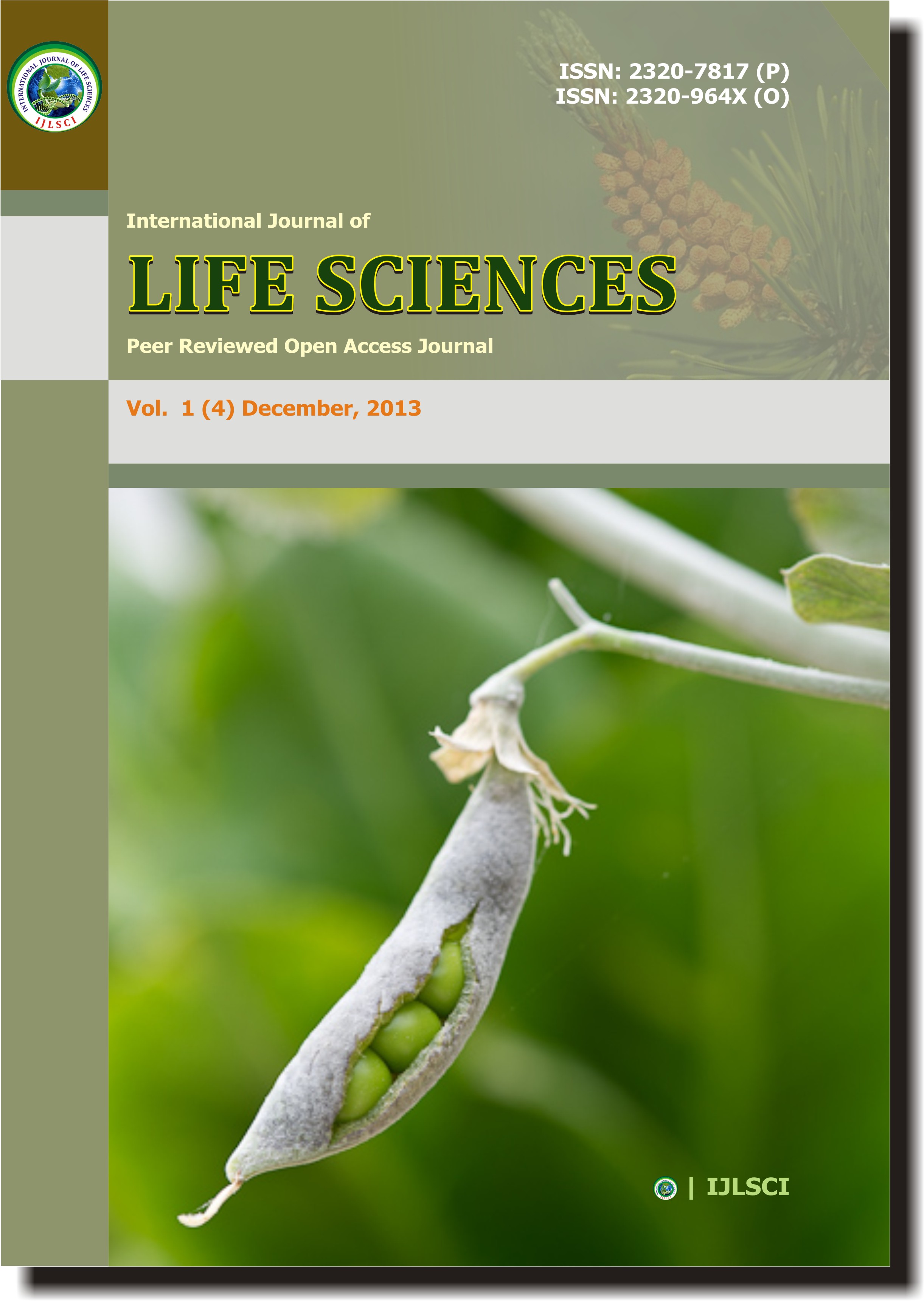An ethnozoological studies and medicinal values of vertebrate origin in the adjoining areas of Pench National Park of Chhindwara District of Madhya Pradesh, India
Keywords:
Ethnozoology, Zootherapy, Tribes, Remedies, Health disorderAbstract
This paper documents zootherapeutic practices in adjoining area of Pench National Park of Chhindwara district. The ethnozoological study was mainly conducted in the villages surrounding the Park area. It is primarily based on field survey carried out in villages, where dwellers provided information on animal species used as medicine, body parts used to prepare the remedies, and the illnesses to which the remedies were prescribed. The document tribes and rural involved in using animal parts as medicines. The animal parts namely- blood, excreta, urine, feather, fat, hair, spins, skin, flesh, bones, secretions, shell etc. were used in raw or cooked forms for the treatment of burn, fracture, sunstroke, pneumonia, rheumatism, asthma, drug addiction, antidote, fever, acidity, fit, cough and cold, tuberculosis, ear pain, allergy, diabetes, jaundice, impotency, diarrhea and dysentery, cataract, paralysis, leprosy, goiter, wound, whooping cough, stomachache, back pain. A total of 30 animal species were recorded and they are used for 41 kinds of different ethno medical purposes. Fauna is the cheapest way for cure of various health disorders
Downloads
References
Ali S (1996) The book of Indian Birds, Bombay: Bombay Natural History Society.
Angelletti LR, Agrimi CC, French D, Mariani-Contantini R(1992) Healing ritual and sacred serpents. Lancet , 340: 223-225.
Benarjee G, Srikanth K, Ramu G, Narasimha Ramulu, K(2010) Ethnozoological study in a tropical wildlife sanctuary of Eturanagaram in the Warangal district, Andhra Pradesh. Indian Journal of Traditional knowledge. 9 (4): 701-704.
Jamir NS and Lal P (2005) Ethnozoological practices among Naga tribes. Indian Journal of Traditional knowledge, 4(1): 100-104.
Jaroli DP, Mahawar MM, Vyas N (2010) An ethnozoogical study in the adjoining areas of Mount Abu wildlife Sanctuary, India, Journal of Ethnobiology and Ethnomedicine, 6(6):1-8.
Judith H (2005) Information resources on Human-Animal Relationships Past and Present. AWIC (Animal Welfare Information Center). Resource Series, 30.
Kakati LN, Bendang AO, Doulo V (2006) Indigenous knowledge of zootherapeutic use of Vertebrate origin by the Ao Tribe of Nagaland. Journal of Human Ecology, 19(3):163-167.
Lohani U (2011) Traditional uses of animals among Jirels of Central Nepal. Ethno Med 8 (2): 115-124.
Mahawar MM, Jaroli DP (2007) Traditional knowledge on zootherapeutic uses by the Saharia tribes of Rajasthan, India. Journal of ethnobiology and ethnomedicine, 3(25): 3-25.
Martin GJ (1995) Ethnobotany. Chapman and Hall, London.
Mishra N, Raut SD, Panda T (2011) Ethnozoological studies and medicinal values of simplipal Biosphere Reserve, Orissa, India.
MoEF (1994) Biodiversity country studies, strategies and action plans. Ministry of Environment and forest, Govt of India.
Padmanabhan P, Sujana KA (2008) Animal products in traditional medicine from Attappady hills of Western Ghat. Indian Journal of Traditional knowledge, 7(2): 326-329.
Prater SH (1996) The Book of Indian Animals. Bombay. Bombay Natural History Society.
Rosner F (1992) Pigeons as a remedy (segulah) for jaundice, New York State, Journal of Medicine, 92(5): 189-192.
Unnikrishnan PM (1998) Animals in Ayurveda, Amruth, 1(3):1-23.
Downloads
Published
How to Cite
Issue
Section
License
Copyright (c) 2013 Authors

This work is licensed under a Creative Commons Attribution-NonCommercial-NoDerivatives 4.0 International License.
Open Access This article is licensed under a Creative Commons Attribution 4.0 International License, which permits use, sharing, adaptation, distribution and reproduction in any medium or format, as long as you give appropriate credit to the original author(s) and the source, provide a link to the Creative Commons license, and indicate if changes were made. The images or other third party material in this article are included in the article’s Creative Commons license unless indicated otherwise in a credit line to the material. If the material is not included in the article’s Creative Commons license and your intended use is not permitted by statutory regulation or exceeds the permitted use, you will need to obtain permission directly from the copyright holder. To view a copy of this license, visit http://creativecommons.org/ licenses/by/4.0/











